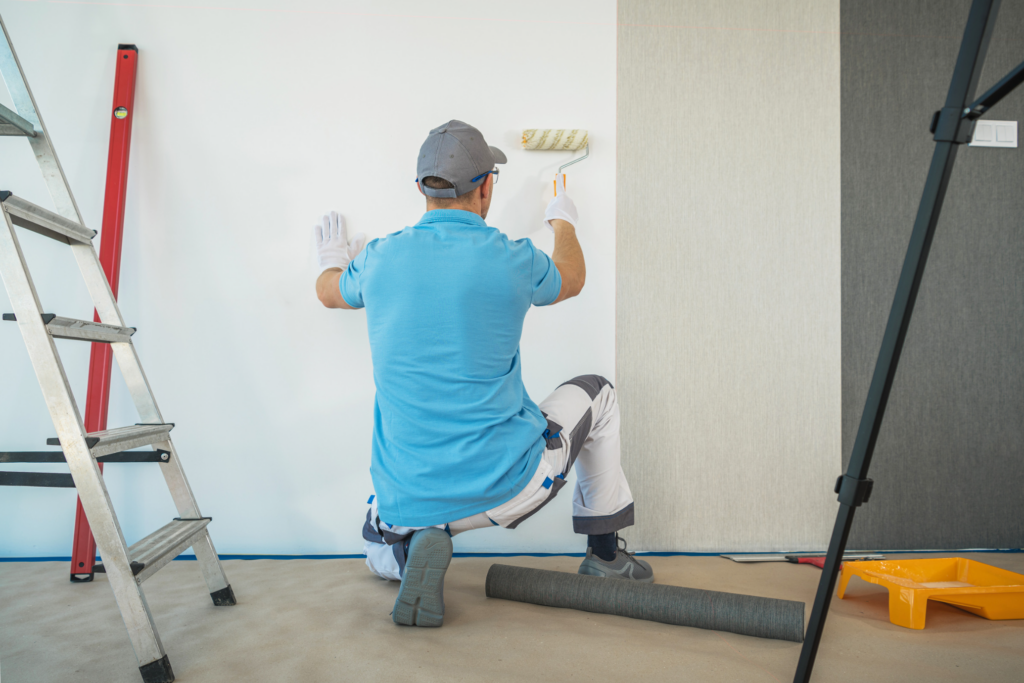
Expert Tips for Installing Wallpaper In Your Home
Feeling like something’s missing in your home’s interior? Adding wallpaper can be a great way to breathe life into any room and make it truly feel like your own. But before you get started, there are a few things that you should know about wallpapering DIY-style.
By following these expert tips, you’ll be able to achieve the perfect look for any room in your home – no matter how experienced or new you may be in the process. Ready to learn more? Keep reading to discover everything you need to know about installing wallpaper.
- Prep the Walls
Before you start putting wallpaper around your house, it’s important to prepare your walls first and foremost. To make sure the walls are paper ready, they need to be clean, smooth, and dry. If your wall already has old wallpaper installed, remove it to make way for the new. Remember to sand any rough spots you find and fill in any holes or cracks.
- Measure and Cut
To apply your wallpaper properly, you must find out the exact measurements for how much wallpaper you’re going to paste on the wall. Doing this is simple: measure the width and height of your walls. Once you’ve got the numbers, add a few extra inches to your wallpaper measurements so you’ll have more than enough paper to work with. With the sizes worked out, get a knife and a straight edge to cut your wallpaper.
- Apply the Adhesive
No wallpaper can stick to a wall without something sticking it in place. That important sticky something is called an adhesive. An adhesive isn’t one substance but a group of substances that are non-metallic and will bind together the two surfaces of two different items (Glue, Cement, Mucilage, Paste). Not only will any adhesive stick things together, but it’ll resist heaven and earth from moving apart from each other (metaphorically).
To make your wallpaper stick, apply the adhesive to the back of the wallpaper by following the manufacturer’s instructions. While applying your adhesive, apply it evenly across the surface area to avoid any lumps or bumps in the wall when you stick it.
- Hang the Wallpaper
Now here’s the part that everyone’s looking for. Once you’ve added enough adhesive to the back of the wallpaper, start applying your wallpaper to the wall. First off, start from the top of the wall. Carefully align the wallpaper with the edge of the wall and smooth it to the end with your hands. As you continue to align your wallpaper, work from the top all the way to the bottom while making sure each strip is aligned properly.
- Smooth Out Air Bubbles
As you smooth your paper across the wall, you’ll notice spots on the wallpaper that look like there’s still air inside. Those are air bubbles that haven’t been smoothed out properly. If you want your wallpaper to be as flat as possible with your wall, you’ll need to remove those bubbles. Get a smoothing tool, or if you don’t have any, use a clean, damp sponge to smooth out any air bubbles or wrinkles in the wallpaper.
- Trim Excess Wallpaper
If you want to ensure that your wallpaper looks perfect, trimming the excess along the top and bottom of the wall is essential. The trick is to use a sharp object like a knife or scissors, which will allow you to make precise cuts without damaging the paper. To ensure accuracy, it’s best to start at one end of the wall and work your way down toward the other side. That way, even if there are any minor discrepancies, they should still be uniform across your entire wallpaper job.
- Clean Up
After wallpaper installation, it is important to remove any extra adhesive or pieces of debris, allowing the wallpaper to dry according to the manufacturer’s prescribed instructions. Clean-up begins with a quick vacuum and dusting of the newly installed wallpaper to ensure that all dirt and dust particles are eliminated.
After cleaning up any messes, you should wait for the wallpaper to dry completely and only proceed with any other decorating steps once the drying process is complete. This is a critical part of installing wallpapers properly, as it ensures that your wallpaper looks neat and won’t succumb to premature damage due to moisture.
Conclusion
Installing wallpaper in your home can be a daunting task, but it can also add an incredible amount of beauty and personality to the space. With these expert tips, you can be confident that the installation process will go smoothly. It’s well worth investing in high-quality tools, materials, and professional installers to get the best results. Get advice from local shops, have clear measurements, and make sure you order more than enough rolls before beginning your project.
Finally, don’t forget to enlist the help of pros from Sirwiss if you think you need extra assistance! No matter what type of wallpaper you decide is best for your home, these techniques will provide an added level of assurance when it comes to getting a fabulous finish for yourself.